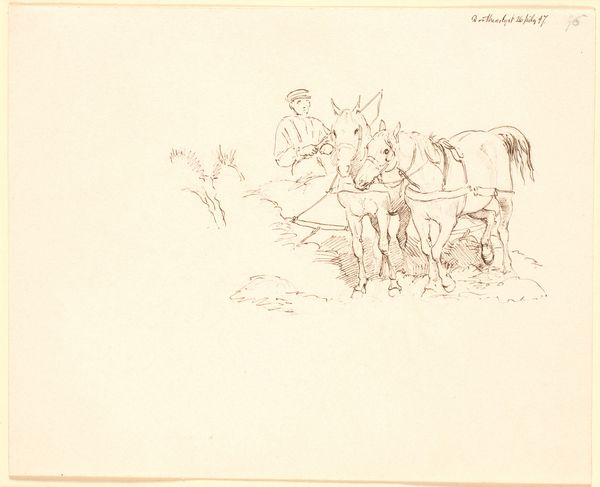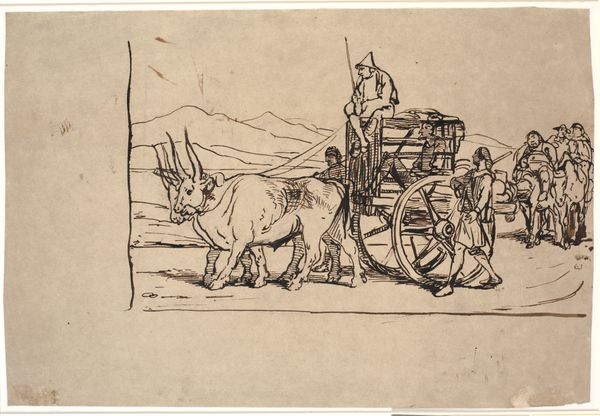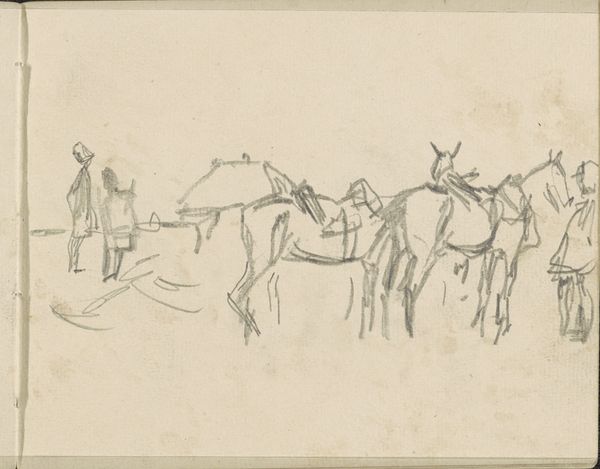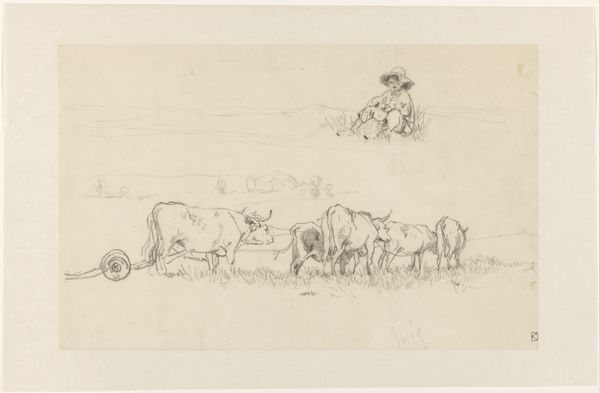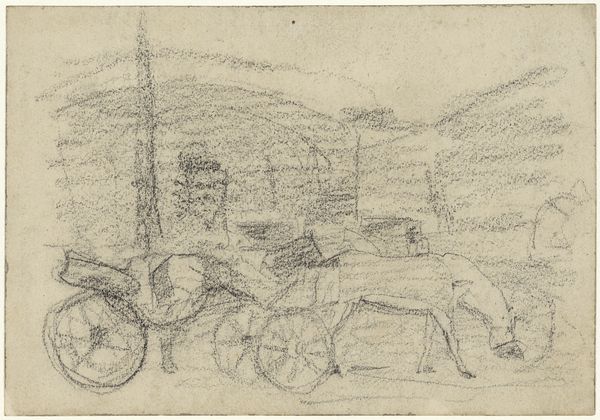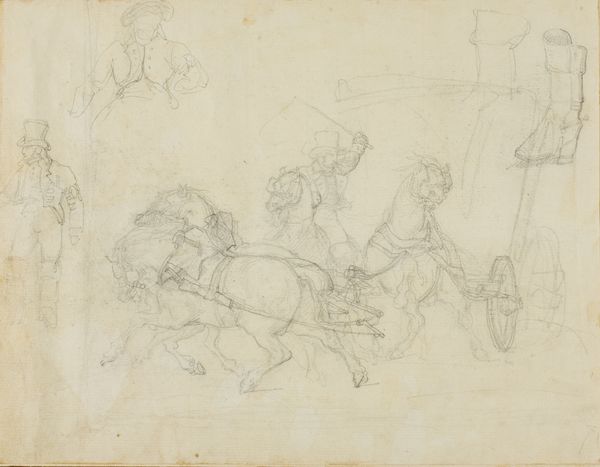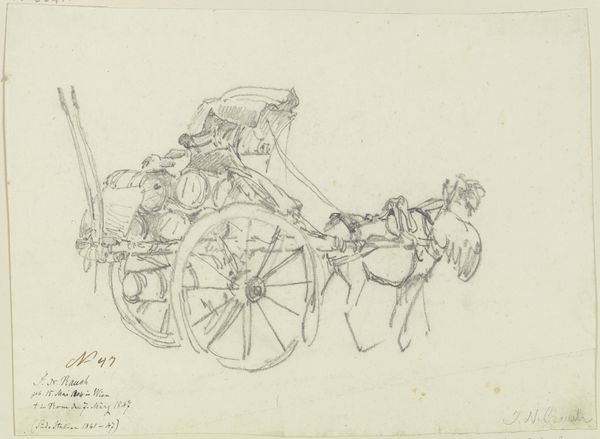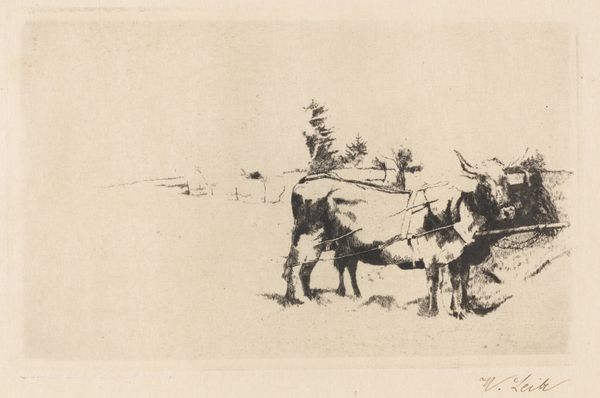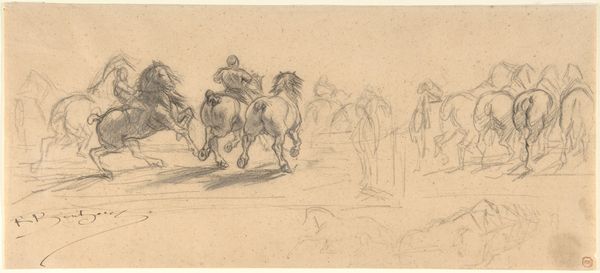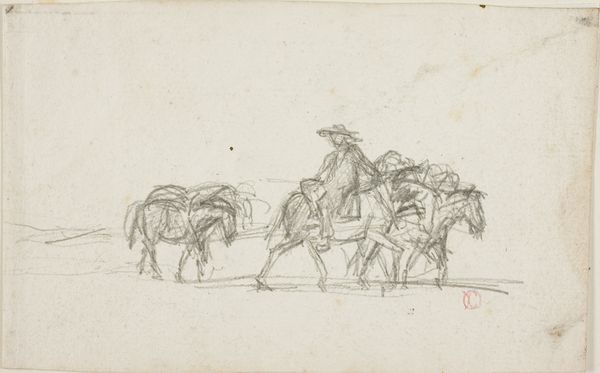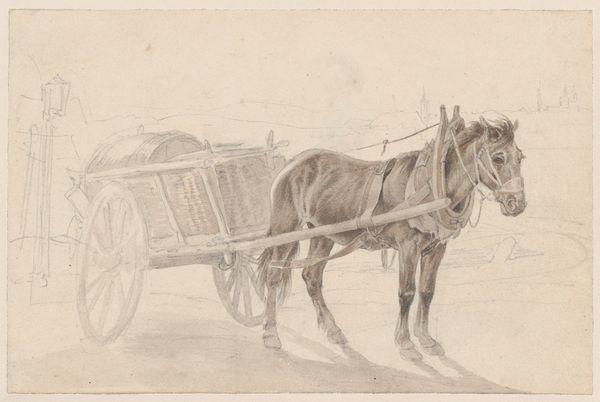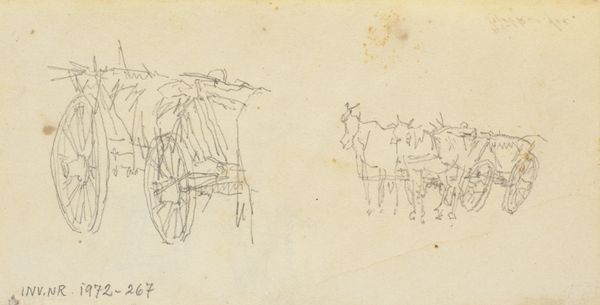
drawing, pencil
#
drawing
#
landscape
#
pencil
#
realism
Dimensions: 123 mm (height) x 157 mm (width) (bladmaal)
Editor: We're looking at Hans Smidth's "Studekøretøj," likely created sometime between 1839 and 1917. It's a pencil drawing currently held at the SMK. The initial impression is of simplicity; it feels like a quick sketch, capturing a moment in time. What formal elements stand out to you in this piece? Curator: The strength of this piece resides primarily in Smidth's use of line. Note the variation in weight and texture. The foreground figures—the oxen and the seated figures—are rendered with considerably darker, more defined lines than the implied background. This creates a spatial hierarchy, drawing our eye to the immediate subject. Furthermore, consider the structural use of the page itself: the emptiness of the lower portion pushing up the composition. Editor: So, it's the contrast in linework that creates depth, even in such a minimal sketch. Is there a specific significance to the composition being positioned higher on the page? Curator: Precisely. And the placement suggests a fleeting moment captured – a quick impression, not a fully realised scene. Notice, also, the directionality of the lines composing the oxen themselves. They’re almost frenetic, suggesting movement and energy, whereas the figures in the cart are more static, their lines calmer. The tension creates dynamism. Do you perceive that balance as successful, aesthetically? Editor: I do, actually. The suggestion of motion contrasted with the stillness gives it life. The piece is sparse, but purposeful. Curator: Indeed. It shows how careful attention to seemingly simple formal elements can create surprisingly evocative effects. Editor: I agree. Examining the lines and their interplay provides a fresh perspective, revealing intentional choices beyond just the subject matter.
Comments
No comments
Be the first to comment and join the conversation on the ultimate creative platform.
